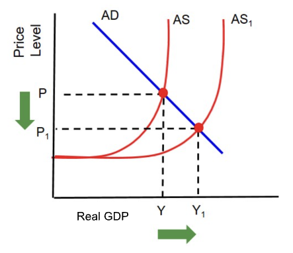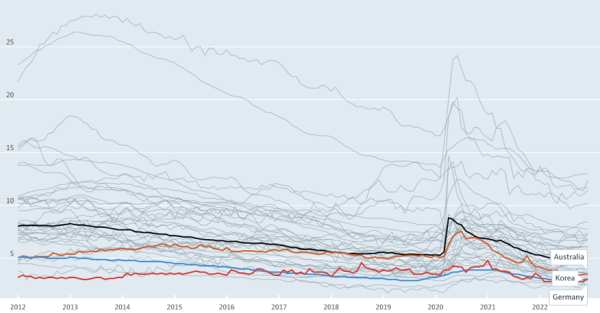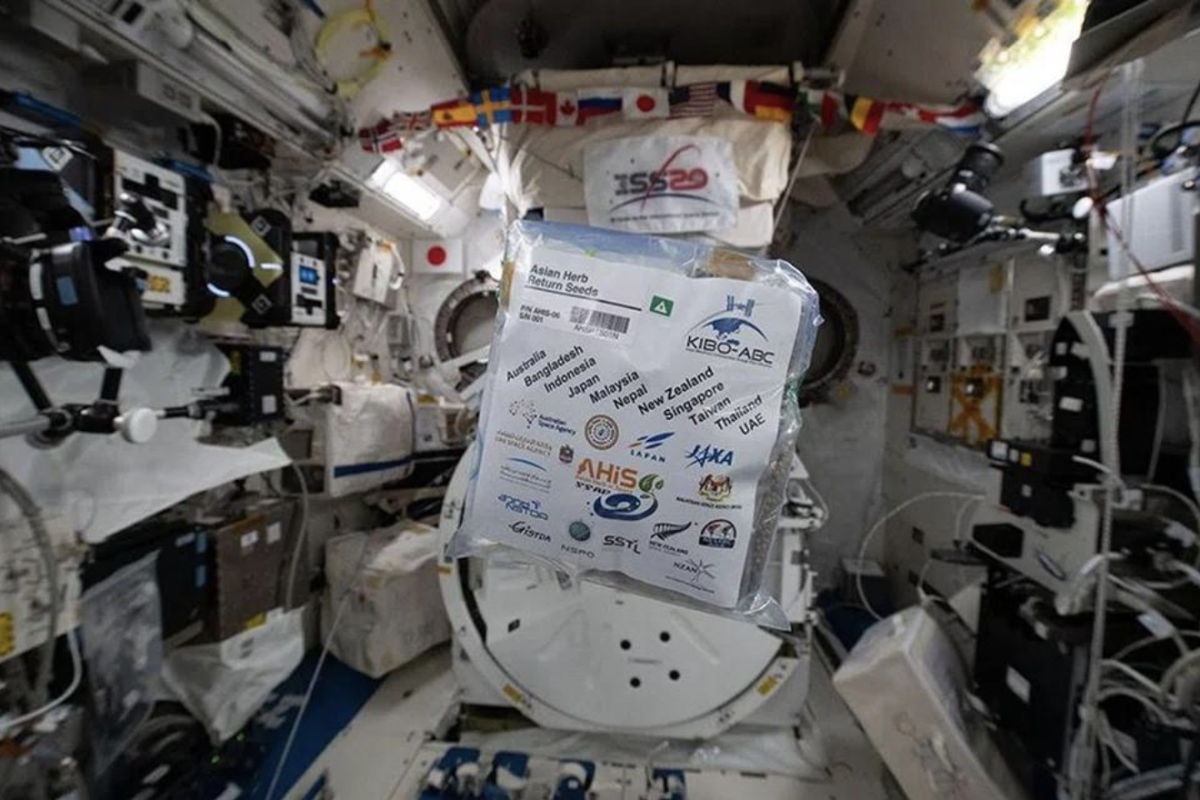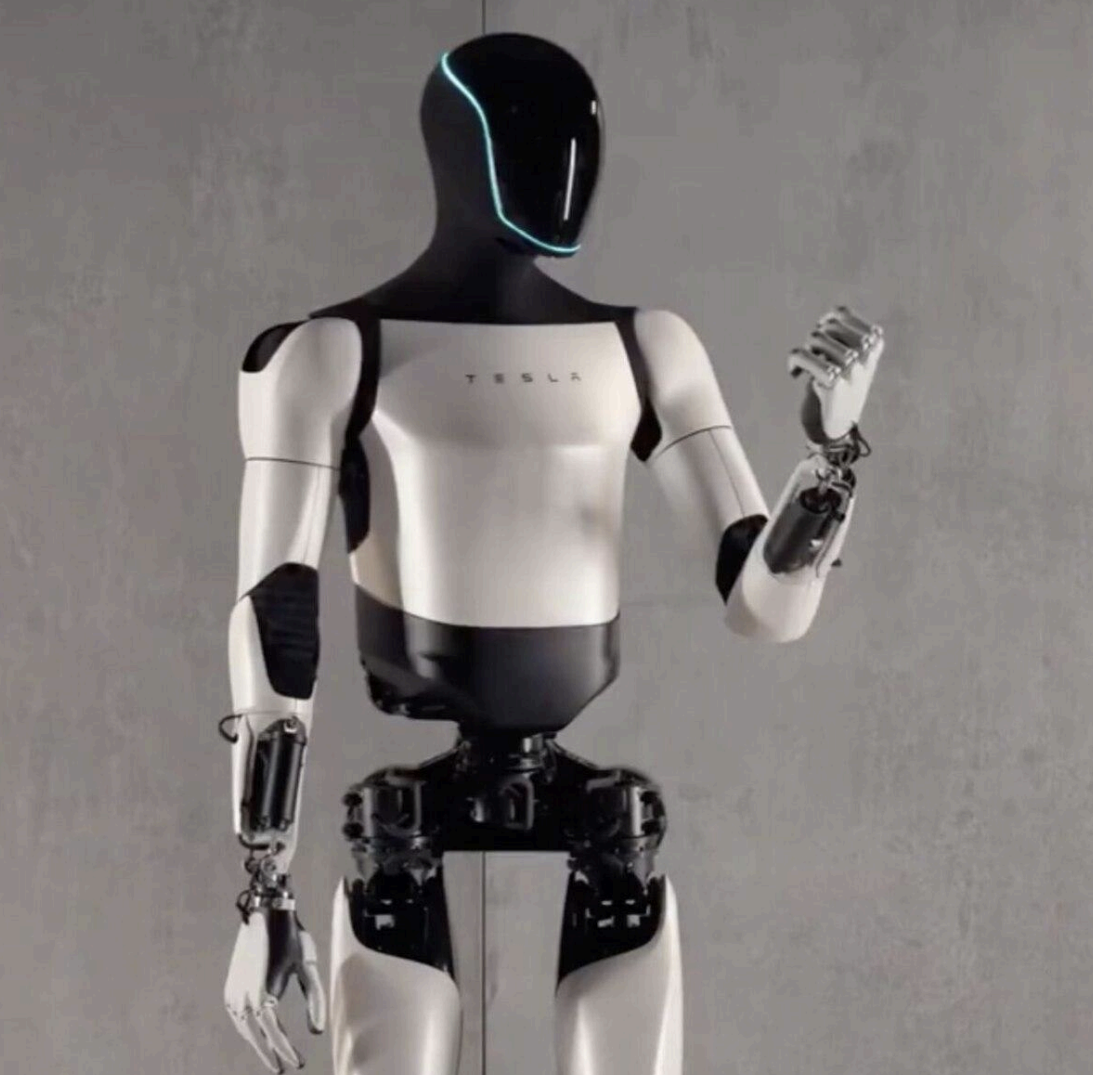Initially coined by American computer scientist John McCarthy, the use of AI and robotic technology is one of the most prominent technological advances in our modern, globalised economy. Despite the stigma surrounding AI, modern economic reports from educational institutions such as Stanford and MIT have found that advances in AI technology have the ability to increase the productivity of workers by 14%, increasing aggregate supply and thus creating economic growth. However, concerns surrounding AI and robotic technology in terms of potential mass unemployment, ethical concerns and sustainability of implementation are issues that must be addressed by both the private and public sectors.
Defined as the simulation of human intelligence in machines, AI and robotic technology is predicted to have many positive impacts on society and the economy. According to the University of Adelaide, they have predicted that robotics and artificial intelligence can boost the Australian economy by $315 billion by 2028. This economic advantage allows workplaces to work more efficiently, make fewer mistakes, and have fixed costs through their capital goods whilst simultaneously producing more output. This positive shift in economic growth is shown in Figure 1, where the Real GDP of the economy increases from Y to Y1 due to increased productivity in firms. However, ceteris paribus, this increase in aggregate supply within the economy will also lead to deflation (P to P1), which can prevent sustained economic growth as it discourages consumer spending, leading to firms producing less. Although investment companies such as Parity Consulting have predicted that 46% of Australia’s workforce could be replaced by AI before 2045, expert figures such as Michael Chiu, partner of the McKinsey Global Institute, which analysis global business and economic issues for the private sector as well as policy leaders have argued that “It’s important to think about mass redeployment instead of mass unemployment”. In other words, much like in the Neolithic and Industrial revolutions which have led to mass redistribution of jobs, the introduction of the AI revolution will likely lead to the same, with an increased emphasis on occupations surrounding technological industries.

In addressing the macroeconomic issue of unemployment, the Australian Government recognises the considerable influence that Artificial Intelligence has in its economy, but has decided against implementing specific policies to reduce the use of robotic technology. Although the OECD had predicted in 2021 that 36%-46% of Australia’s workforce would experience job instability due to improvements in technology, it is important to note that as discussed by Michael Chiu, this prediction from the OECD may not include the concept of “mass redeployment” as opposed to “mass unemployment” into consideration. However, the Australian Government still recognises the risks involved with Artificial Intelligence, and has launched projects such as the Digital Economy Strategy, the National Skills Priority List, as well as Australia’s 8 Artificial Intelligence Ethics Principles, which aim to create new job opportunities in emerging technologies such as Artificial Intelligence, identify the occupations that are in high demand, as well as address ethical considerations surrounding the parameters of AI. In addition, the Australian Government has recognised the large potential benefits of AI, and has subsidised $44 million towards Artificial Intelligence and Digital Capability Centres, aiming to connect businesses with AI equipment that can increase the productivity and output of the workforce and economy, leading to sustained long-run economic growth.

Comparatively, the issue of Artificial Intelligence and Robotic Technology has been managed in other countries in a similar, but more prominent manner. Through research published by Michael Spencer, the founder of the newsletter AiSupremecy, globally on average there are 113 industrially installed robots per 10,000 employees in the manufacturing sector, increasing from 74 as of 2019. Countries such as South Korea have invested approximately $2 billion into Artificial Intelligence development and leads the way in robotic technology, with 855 robots installed for every 10,000 employees. In addition, South Korea has developed several leading artificial intelligence institutes such as the Korea Advanced Institute of Science and Technology, as well as investing in education and training programs to prepare its workforce for the new artificial intelligence-driven economy. Furthermore, South Korea has been placing ethical considerations into the use of AI and robotic technology, and in 2019 the government published these ethical guidelines that addressed points of contention regarding transparency, fairness, and accountability. Interestingly, contrary to common belief, South Korea also has one of the lowest unemployment rates in the world despite its heavy reliance on AI and robotics, of 3% in 2022 compared to the global average of 7.11%, and Australia’s unemployment rate of 3.5% in 2022, suggesting that AI and unemployment may actually have an inverse relationship.
The social stigma and stereotype of developments in AI and robotic technology in causing mass unemployment and social instability is a largely disproved one. However, the core concerns that lay within it are still plausible, with the release of AI platforms such as Chat GPT resulting in huge concerns in educational institutions with respect to plagiarism and deskilling, which will consequently result in a decrease in productivity for future generations of workers. However, for the foreseeable future, the introduction and developments in AI and robotic technologies are largely positive, with similar increases in productivity as during the Industrial Revolution – AI productivity increase of 14% (Stanford 2023), Industrial Revolution of 6% per decade (UC Berkeley, 2023). The Australian government has recognised the economic benefits of AI and robotics and has followed economies such as South Korea in investing heavily in R&D, as well as initiating initiatives such as the Digital Economy Strategy and the Australian AI Ethical Guidelines, which help prepare the Australian workforce and economy to prepare for the future development of AI and robotics. A development that, despite the social stigma, can dramatically increase the productivity and output of economies, as well as result in the mass redistribution of jobs in the economy to potentially higher paying, and less repetitive jobs.
Sources and Recommended Reading:
Arafath, H. (n.d.). Impact of AI and Future of Jobs in Australia. [online] Parity Consulting. Available at: https://www.parityconsulting.com.au/blog/2022/08/ai-impact-jobs-in-australia#:~:text=AI%20Will%20Undoubtedly%20Replace%20Some [Accessed 7 Jun. 2023].
Bouscasse, P., Nakamura, E. and Steinsson, J. (2023). When Did Growth Begin? New Estimates of Productivity Growth in England from 1250 to 1870. [online] Available at: https://eml.berkeley.edu/~jsteinsson/papers/malthus.pdf [Accessed 10 Jun. 2023].
Department of Industry, Science and Resources (2022). Australia’s AI Ethics Principles. [online] Industry.gov.au. Available at: https://www.industry.gov.au/publications/australias-artificial-intelligence-ethics-framework/australias-ai-ethics-principles [Accessed 11 Jun. 2023].
Koetsier, J. (2018). Jobs And Robots: 25 Countries Ranked On Job Loss Potential From Automation, Robotics, And AI. [online] Forbes. Available at: https://www.forbes.com/sites/johnkoetsier/2018/04/23/usa-ranks-9th-in-global-robotics-automation-job-loss-report-after-korea-germany-japan-canada/?sh=20d478bd3f62.
Lynch, S. (2023). Will Generative AI Make You More Productive at Work? Yes, But Only If You’re Not Already Great at Your Job. [online] Stanford HAI. Available at: https://hai.stanford.edu/news/will-generative-ai-make-you-more-productive-work-yes-only-if-youre-not-already-great-your-job [Accessed 10 Jun. 2023].
Mizen, R. (2021). One in 10 Australian jobs is at high risk of being automated. [online] Australian Financial Review. Available at: https://www.afr.com/politics/federal/oecd-reveals-jobs-and-regions-most-at-risk-from-automation-20210926-p58utt [Accessed 5 Jun. 2023].
OECD (2023). Unemployment Rate. [online] OECD. Available at: https://data.oecd.org/unemp/unemployment-rate.htm [Accessed 8 Jun. 2023].
Schubert, M. (2022). Why must Australia invest in AI research and development? [online] Australian Institute for Machine Learning (AIML) | University of Adelaide. Available at: https://www.adelaide.edu.au/aiml/news/list/2022/08/03/why-must-australia-invest-in-ai-research-and-development#:~:text=The%20CSIRO%20and%20Data61%20forecast [Accessed 10 Jun. 2023].
Spencer, M. (2022). This Time The Robots Are Really Coming! [online] www.linkedin.com. Available at: https://www.linkedin.com/pulse/time-robots-really-coming-michael-spencer-/.
www2.staffingindustry.com. (2022). World – Number of industrial robots per employee rises with 8% CAGR from 2016 through 2021. [online] Available at: https://www2.staffingindustry.com/eng/Editorial/Daily-News/World-Number-of-industrial-robots-per-employee-rises-with-8-CAGR-from-2016-through-2021-63978#:~:text=%E2%80%9CThe%20new%20average%20of%20globa [Accessed 9 Jun. 2023].















